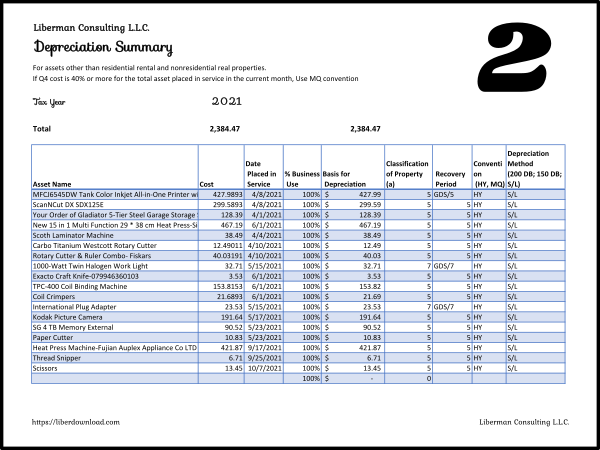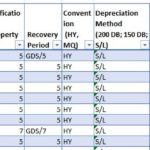To depreciate a business asset and complete IRS Form 4562 Depreciation and Amortization, there are few things to consider:
- Which depreciation to use
GDS
ADS
- Property class
You need to know in which category your asset is.
- Recovery Period
It is usually equal to the property class if your asset is listed or included in the basic ones.
In general:
office machines like calculators are 5-years property class with 5 yrs. recovery periods.
Office furniture are 7 years property class with 7 years recovery period.
Residential rental properties like single house and apartments have 27.5 recovery periods.
Non-residential properties like commercial building and warehouses have 39 years of recovery periods.
Your house office in your house if depreciated, has 39 years of recovery period like nonresidential property.
Home office in your apartment in your apartment building you own, if depreciated has 27.5 years of recovery period as residential property.
- Date you place your property is service.
It is when it is available and ready to be used even if it was not used right away.
- Business use
It is 100% if you use it for business only.
If you use it for both personal and business, you need to track the usage.
If you use it for both investment and business, you need to track the usage.
- Depreciation convention
Mid-month convention
Use it for residential and non-residential properties.
Mid-quarter Convention
Use this convention if properties placed in service and disposed of during the last 3 months of the year is more than 40% all the basis of the properties you acquired and placed in service that year not included residential and nonresidential properties.
In this convention, you place properties in service and dispose of them halfway in the quarter you placed them in service or disposed of them.
You need to know the quarter in which you placed each property in service.
Half-Year Convention
This convention treats the properties you placed in service during the year as placed in service halfway through the year.
Use it if mid-month convention and mid-quarter convention do not apply to you.
- Depreciation methods
- 200% declining method under GDS
- 150% declining method under GDS
- Straight line method under GDS
- Straight line methods under ADS
To calculate your depreciation deduction for properties you placed in service during the year, you need to know:
- Date placed in service
- Basis amount
- Depreciation system (GDS, ADS)
- Property class
- Recovery period
- Convention method (MM, MQ, HY)
- Depreciation method (200% GDS, 150% GDS, SL GDS, SL ADS)
- Locate IRS depreciation rate table or calculate it yourself.
To depreciate an asset, you usually use GDS. You do not use ADS unless you are required to or elect to.
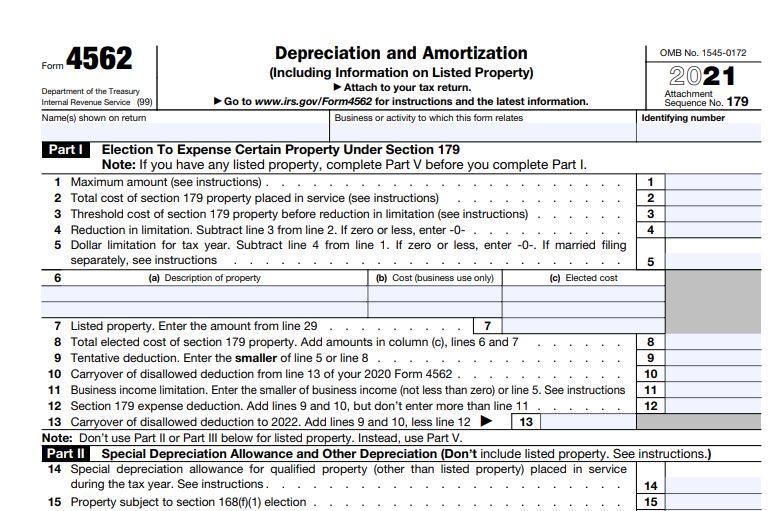
One example you are required to use ADS is when you use a listed property for 50% or less in your business and the rest for investment or personal. You would use investment and business uses % in the depreciation deduction calculation but use business % to figure out whether ADS is required or not.

Appendix A on IRS Publication 946 How to Depreciate Property
Depreciation rate table from IRS Publication 946
Appendix B Table of Class Lives and Recovery Periods – IRS Publication 946
How to use Appendix B?
Appendix B is helpful to determine both the class lives and recovery periods for your depreciable assets.
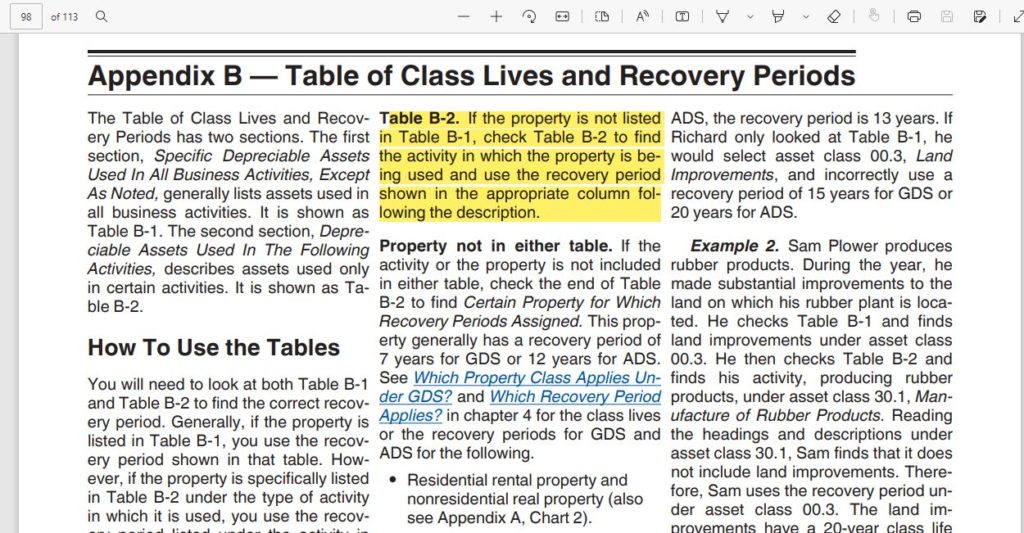
Option 1
You need to look at both table B-1 and table B-2 to use the correct recovery period.
Look for your depreciable asset in table B-1.
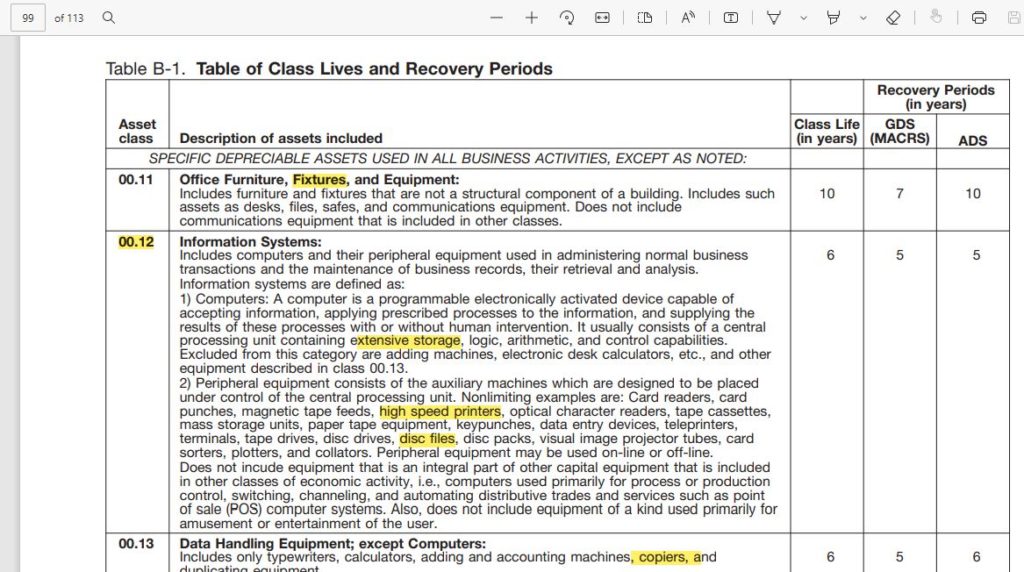
If you find it, go to table B-2 to locate the business activity that uses it.
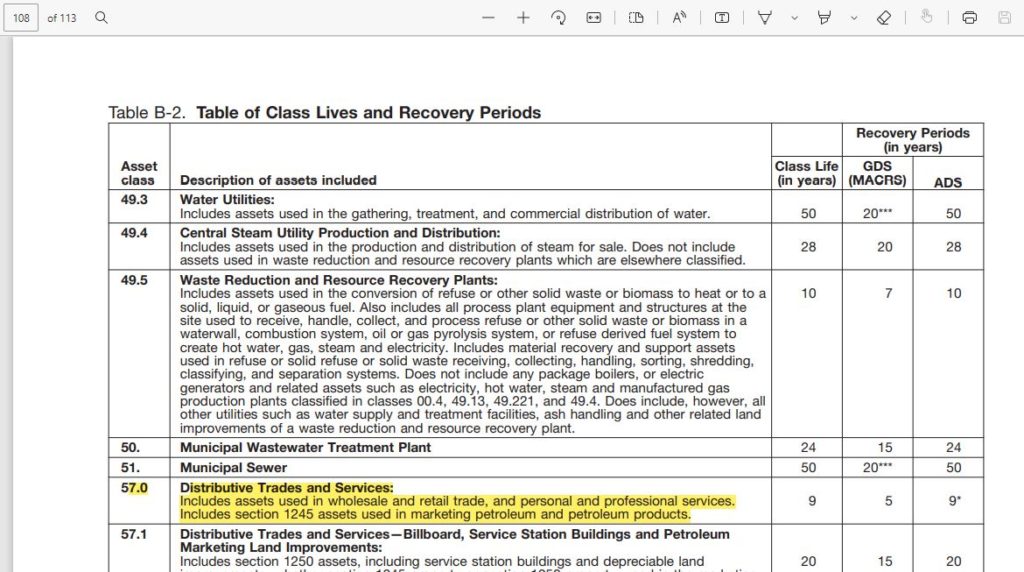
If you find the business activity, see if the asset been depreciated is listed in the list under that activity.
If you see the asset, use the recovery period listed in table B-2 for that asset class.
Option 2
If you find the property described in Table B-1 and go to table B-2 but do not see the business activity or you see the business activity, but the asset is not listed in the list under that type of business activity, go back to table B-1 to look for the asset again and use the recovery period listed in table B-1.
Option 3—Asset is not in Table B-1, Business activity is in Table B-2, & Asset is listed in Table B-2 under the business activity
If the asset is not in table B-1, look for the activity in table B-2 and look for the assets listed there. If your asset is listed, use the recovery period in table B-2 for that asset class.
Option 4: Asset is not in Table B-1, Business activity is in Table B-2, but Asset is not specifically listed under that business activity in table B-2
If the asset is not listed in table B-1, go to table B-2 to look for the business activity that uses it. If you find the business activity, read its description for assets listed. If the asset is not specifically listed under that business activity, use the recovery period in table B-2 for that business activity asset class.

Option 5
If the asset been depreciated or the business activity that uses is not listed in table B1 and table B-2, go to the end of table B-2 for recovery period assigned for certain property.
Example. Printer is listed in table B-1 0.12 asset class.
Table B-2 as the business in asset class 57.0 but printer is not listed there. Therefore, recovery period in table B-1 for asset class 00.12, 5 years would be used. It is a 6-year class life asset. It is a 5-year property class with a recovery period of 5 years under GDS.
Now that you know the asset class, the recovery period, go to Appendix A table to decide for the depreciation MACRS system you want to use which depreciation method based on your recovery period, you would use knowing the convention, class, date placed in service and find the depreciation rate table. In our printer example:
MACRS System: GDS
Depreciation Method: SL
Recovery Period: GDS/5
Convention: HY
Asset Class life: 6
Property class: 5
Quarter placed in service: Any
Table: A-8
Example 2: Vinyl cutter not listed in Appendix B Table B-1
Vinyl cutter
It is not listed in table B-1
Table B-2 listed asset class 57 retail trade the business activity.
The description of assets under the business activity didn’t specifically specify vinyl cutter.
The class life and recovery period under asset class 57.0 would be used for the vinyl cutter depreciation.
Class life: 9
Recovery period: 5 under GDS
Now you would go to Appendix A to find the remaining criteria that would guide into locating the rate table to use to depreciate it.
How to find the property class?
Find the class life in years using table B-1 and B-2. Take note of the class life in years.
Locate the classification chart on IRS Instructions for Form 4562 Depreciation and amortization page 8 (for 2021 form). Use the chart to match the class life in years to the property class. For instance, an asset with class life in years ranging between 4-10 years (4- and 10-years class life assets are not included) is a 5-year property.
If you don’t know the recovery period, there is a chart in the same instruction page 9 that corresponds each property class to its recovery period. Generally, you could locate the recovery period in Appendix B Table B-1 and B-2 of Publication 946.

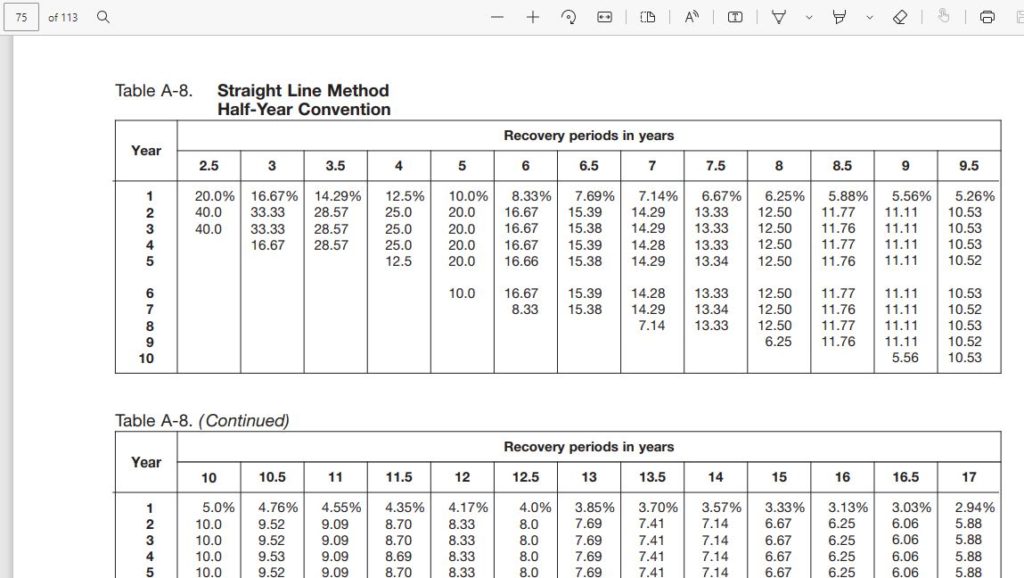

Summary
You need to know your asset class life in years, its property class, its recovery period, the type of MACRS to use, the time it is placed in service to locate the right depreciation table number in Appendix A of IRS Publication 946.
2-How to Depreciate Business Assets to Complete Form 4562
The video explains the process.
